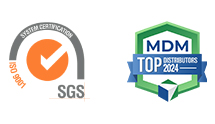Powered air-purifying respirators function by forcing ambient air through air-purifying elements and filters, allowing people to breathe with less work.
Depending on your environment and the particulates you’re protecting against, it may be good practice to use a powered air-purifying respirator (PAPR) when working in certain sectors. This includes healthcare, pharmaceutical manufacturing, painting, spray foam insulation, and more. Once you have assessed your workplace hazards and decided that a PAPR is the right respiratory protection, keep in mind these key differences inherent to the system compared to disposable respiratory protection:

















